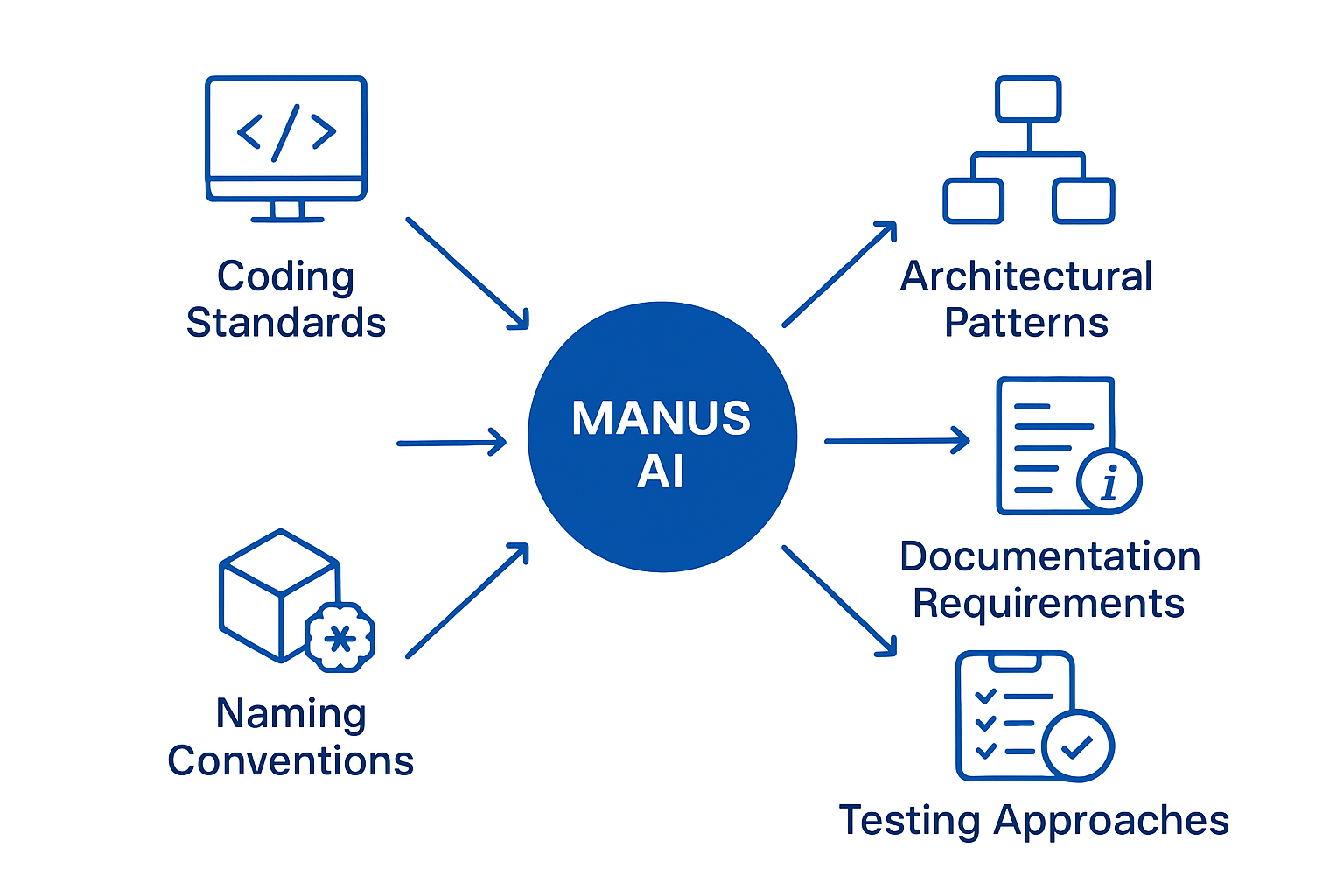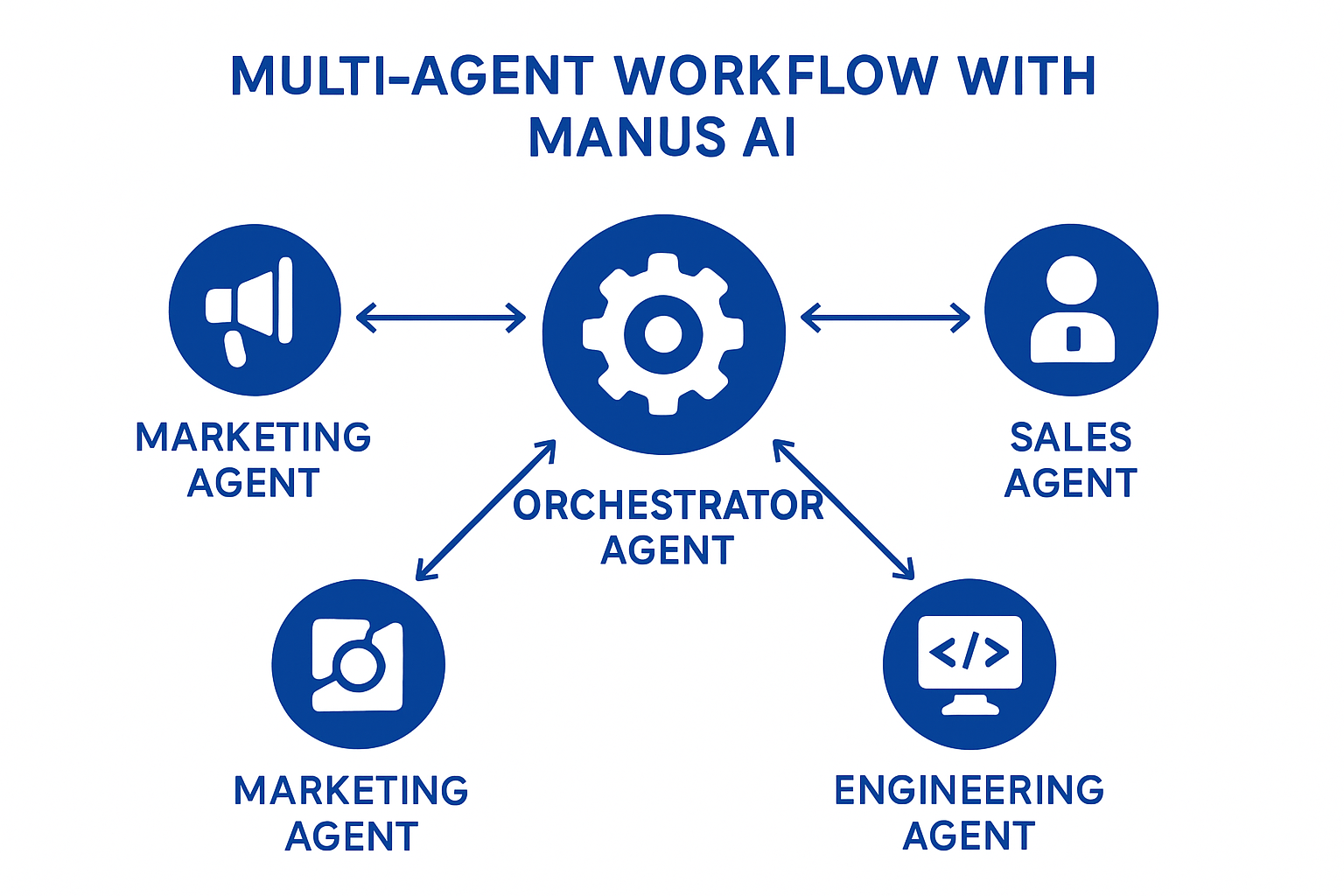Beginner Lesson 2: Core Features and Architecture
Learning Objectives
By the end of this lesson, you will be able to:
- Describe the core architecture of Manus AI
- Understand the key components that enable autonomous operation
- Explain how Manus processes and executes complex tasks
Manus AI Architecture Overview
Layered Architecture
Manus AI is built on a sophisticated layered architecture that enables its autonomous capabilities. The system consists of several interconnected layers that work together to process user requests, plan actions, and execute tasks.

Figure 1: Manus AI Contextual Understanding Framework
Key Architectural Components
-
Input Processing Layer
This layer handles the initial processing of user requests, including natural language understanding, intent recognition, and context tracking. It transforms unstructured user inputs into structured task representations that the system can work with.
-
Planning Module
The planning module breaks down complex tasks into manageable steps, creating execution plans that guide the system's actions. It uses advanced reasoning capabilities to determine the most efficient approach to solving problems.
-
Knowledge Base
Manus maintains an extensive knowledge base that includes both general knowledge and specialized domain expertise. This knowledge is continuously updated and refined based on new information and user interactions.
-
Tool Integration Framework
This framework allows Manus to interact with external tools and systems, extending its capabilities beyond what's built into the core system. It includes APIs, connectors, and adapters for various services and applications.
-
Execution Engine
The execution engine carries out the planned actions, monitoring progress and handling exceptions as they arise. It provides feedback to the planning module, enabling dynamic adjustments to the execution plan when necessary.
-
Learning System
Manus continuously learns from its interactions, improving its performance over time. This system captures successes, failures, and user feedback to refine its models and approaches.
Core Features in Detail
1. Autonomous Task Execution
Manus AI's autonomous task execution is powered by its ability to:
- Decompose complex tasks into manageable subtasks
- Prioritize actions based on dependencies and efficiency considerations
- Monitor execution and adjust plans in real-time
- Handle exceptions and recover from errors without human intervention

Figure 2: Autonomous Coding Workflow in Manus AI
2. Multi-Modal Processing
Manus AI processes and generates multiple types of data through specialized modules:
- Text Processing Module: Handles natural language understanding and generation
- Visual Processing Module: Analyzes and generates images and visual content
- Code Processing Module: Understands, generates, and debugs code across multiple programming languages
- Data Analysis Module: Processes structured and unstructured data for insights
3. Advanced Tool Integration
Manus AI integrates with external tools through a flexible plugin architecture:
- Web Browser Integration: Allows Manus to navigate the web, search for information, and interact with web applications
- Development Environment Integration: Enables code writing, testing, and debugging in various programming environments
- Data Processing Tools: Connects to databases, spreadsheets, and data visualization tools
- Content Creation Tools: Interfaces with document editors, presentation software, and media creation tools
4. Sandbox Environment
Manus operates within a secure sandbox environment that provides:
- Isolated Execution: Tasks run in a contained environment to ensure security
- Resource Management: Controlled access to computational resources
- Tool Access: Safe interfaces to external tools and services
- Persistent Storage: Managed file system for storing and retrieving data
The Manus AI Processing Pipeline
When a user submits a request to Manus AI, it goes through a sophisticated processing pipeline:
-
Request Interpretation
The system analyzes the user's request, extracting key information and determining the overall goal. This involves natural language processing, intent recognition, and context analysis.
-
Task Planning
Based on the interpreted request, Manus creates a detailed plan for completing the task. This includes identifying necessary subtasks, determining dependencies, and selecting appropriate tools and approaches.
-
Resource Allocation
The system allocates computational resources and tool access based on the requirements of the task. This ensures efficient execution while maintaining security and performance.
-
Execution
Manus executes the planned actions, monitoring progress and making adjustments as needed. This may involve running code, accessing web services, processing data, or generating content.
-
Result Verification
The system verifies that the results meet the requirements of the original request, performing quality checks and validation steps as appropriate.
-
Delivery
Finally, Manus delivers the completed work to the user, along with any relevant explanations or documentation.

Figure 3: Multi-Agent Workflow in Complex Task Processing
Technical Implementation
Foundation Models
Manus AI is built on advanced foundation models that provide the base capabilities for language understanding, reasoning, and generation. These models are fine-tuned for specific tasks and domains to enhance performance.
Specialized Components
In addition to foundation models, Manus includes specialized components for:
- Planning and Reasoning: Dedicated modules for breaking down complex tasks and making logical decisions
- Tool Use: Specialized interfaces for interacting with external tools and services
- Memory and Context Management: Systems for maintaining context across interactions and storing relevant information
- Self-Monitoring: Components that evaluate the system's own performance and make adjustments
Integration Architecture
Manus uses a modular integration architecture that allows for:
- Flexible Component Replacement: Individual components can be updated or replaced without affecting the entire system
- Scalable Processing: Computational resources can be allocated based on task requirements
- Extensible Capabilities: New tools and services can be integrated as needed
Practical Exercise: Identifying Architectural Components
Consider the following scenario and identify which architectural components of Manus AI would be involved:
A user asks Manus to analyze a dataset of customer feedback, identify key trends, create visualizations, and prepare a summary report with recommendations.
Knowledge Check: Core Features and Architecture
Question 1
Which component of Manus AI is responsible for breaking down complex tasks into manageable steps?
The Planning Module is responsible for breaking down complex tasks into manageable steps. It creates execution plans that guide the system's actions using advanced reasoning capabilities to determine the most efficient approach to solving problems.
Question 2
What is the primary purpose of the sandbox environment in Manus AI?
The primary purpose of the sandbox environment is to ensure secure and isolated execution of tasks. It provides a contained environment that manages resource access, tool interfaces, and persistent storage while maintaining security.
Question 3
Which of the following is NOT one of the key architectural components of Manus AI?
User Interface Generator is not one of the key architectural components of Manus AI. The main components include the Input Processing Layer, Planning Module, Knowledge Base, Tool Integration Framework, Execution Engine, and Learning System.
Quiz Complete!
You've completed the quiz on Manus AI Core Features and Architecture.
You've earned your progress badge for this lesson!